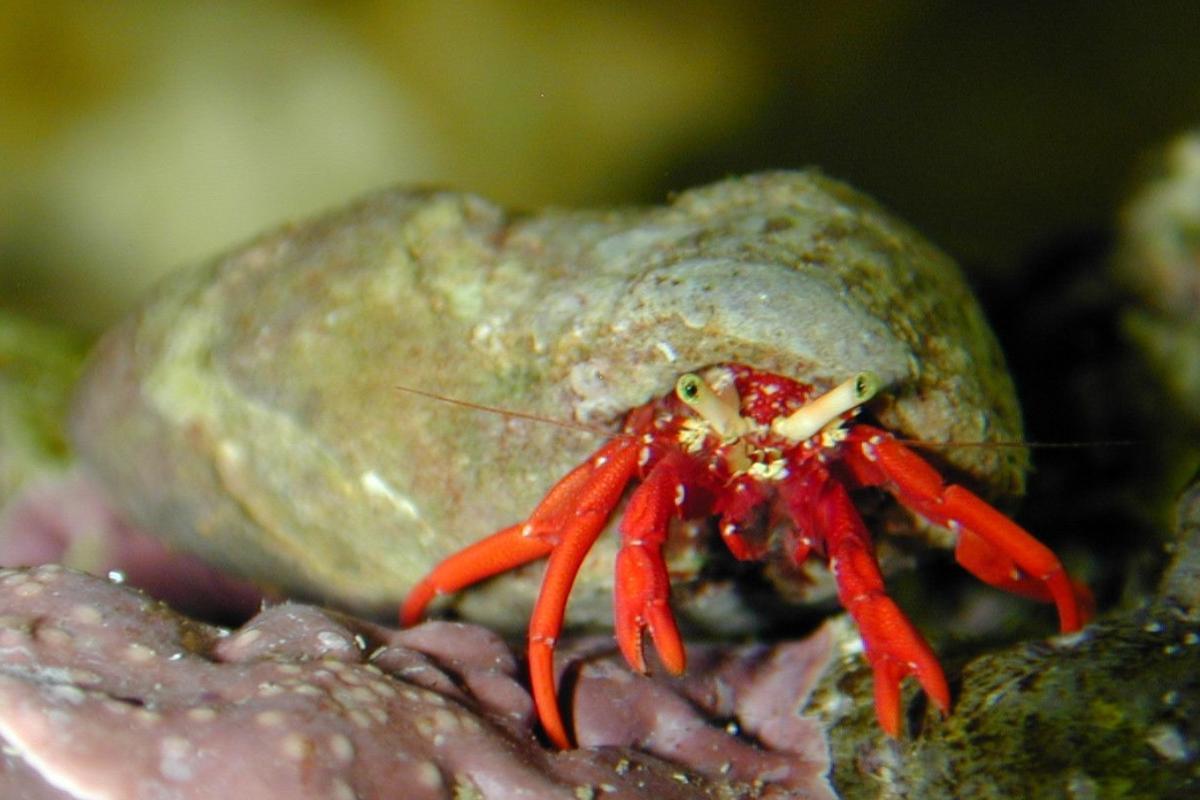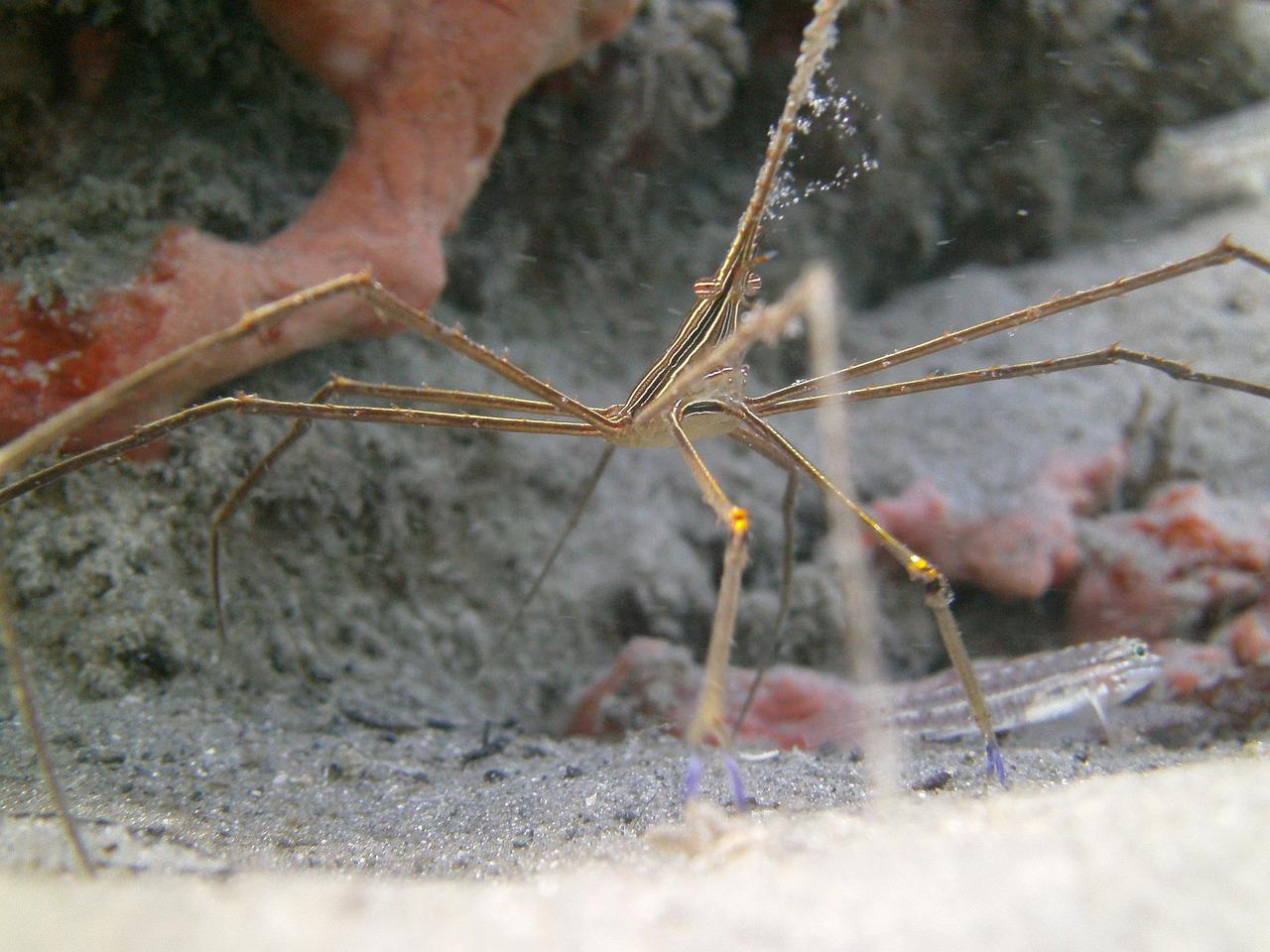Types of Crabs - Different Crab Species


There are various species or types of crabs, including the brown crab (Cancer pagurus), red king crab (Paralithodes camtschaticus), red reef hermit crab (Paguristes Cadenati ), coconut crab (Birgus latro), New Zealand pea crab (Pinnotheres sp.), blue swimmer crab (Portunus pelagicus), sponge crab (Dromia personata), velvet crab (Necora puber), painted ghost crab (Ocypode gaudichaudii) and arrow crab (Stenorhynchus seticornis).
Crabs are animals which can be found on beaches across the world, although there are also some types of freshwater crabs. They are recognized for many different characteristics such as their method of walking side to side, their forceful pincer claws and their hard carapace. Despite having certain similarities, there are many individual species with distinctive differences in terms of physicality and behavior. thedailyECO examines these types of crabs by looking at various different crab species with photos.
- Classification of crabs
- Brown crab (Cancer pagurus)
- Red king crab (Paralithodes camtschaticus)
- Red reef hermit crab (Paguristes Cadenati)
- Coconut crab (Birgus latro)
- New Zealand pea crab (Nepinnotheres novaezelandiae)
- Blue swimmer crab (Portunus pelagicus)
- Sponge crab (Dromia personata)
- Velvet crab (Necora puber)
- Painted ghost crab (Ocypode gaudichaudii)
- Arrow crab Stenorhynchus seticornis)
- Other types of crabs
Classification of crabs
Since they lack a backbone, crabs are types of invertebrate animals. They belong to the phylum Arthropoda and the subphylum Crustacea. This means that crabs are considered to be crustaceans. There are many different types of crustaceans, including crabs, lobsters, crayfish and shrimp. Some of these may bear resemblance to certain crab species, but there are only two types of animals that can be considered crabs:
- Infraorder Brachyura: crustaceans of this infraorder are considered to be ‘true crabs’. These are the majority of species which we can call crabs, having the specific short-bodies morphology that is common to these animals.
- Infraorder Anomura: while it contains some other species, this infraorder is home mostly to hermit crabs. They are very close to true crabs, but are sufficiently different to require a separate infraorder.
True crabs have certain characteristics which entitle them to belong to a given order. These include the following:
- Wide and flat body structure
- Two chelae (claws)
- Eight walking legs (the non-claw appendages)
- Gills for breathing underwater
- Hard carapace which protects the body
There are other features and behaviors which are common to all types of crabs, but individual species will have varying characteristics. For example, most types of crabs are sexually dimorphic, with males and females having certain differences. The extent of these differences can vary greatly according to the specific species. For example, many male fiddler crabs have one very large claw which is used in mating behavior.
Other differences are related to their habitat. Land crabs still have gills, but they also have specially adapted gills which allow them to better breathe when out of water[1].
For us to understand many of the differences we can see in the different types of crab, it will be helpful to look at different crab species individually. We provide some of the most indicative species of crab with descriptions and photos to understand them more clearly.
Learn more about where marine crabs live with our article on types of aquatic ecosystems.
Brown crab (Cancer pagurus)
Named after the reddish-brown carapace which helps protects their vulnerable insides, the brown crab is one of the most well-known crabs in the world. This is because they are an edible type of crab which provides a relatively large amount of meat from tis body and claws. It is particularly important to the cuisine of Western Europe since it can be found in the North Sea, North Atlantic Ocean and other seas. They are nocturnal and mainly feed on other crustacean species.

Red king crab (Paralithodes camtschaticus)
Another species of crab known for its common use by fisheries, the king crab stands out for its incredible size. The red king crab is native to the Pacific Ocean, although it can be also found in very northerly waters. Their leg span can be nearly as much as 6 ft (1.8 m) and they can weigh as 28 lb (12.7 kg). Males are usually larger than females. When tending to her eggs, the female stays in cooler waters while the male stays in warmer areas to conserve energy.
The king crab in the photo shows the burgundy color on the topside of their body. It is only when they are cooked that the red king crab turns red in color.

Red reef hermit crab (Paguristes Cadenati)
As explained above, these are not true crabs since they are from the infraorder Anomura. Like other hermit crabs, they have a soft abdomen and need to find the shells of other animals to lodge inside. They do so for protection. The hind legs are reduced in size compared to the others and the color of their shell is deep red, as shown in the photo. It is found in the eastern Atlantic and the Indo-Pacific Oceans.

Coconut crab (Birgus latro)
It is the largest terrestrial arthropod that exists, the coconut crab measures up to 16" (40 cm) in terms of body length, although the legs can make it much longer. They live in forested lands along the costal regions of the Indo-Pacific Ocean. It has front claws of different sizes which are strong enough to open the coconuts on which they feed. They are a type of terrestrial hermit crab which mate on land, but release their larvae into the sea. Despite this, adult coconut crabs will drown if they stay in water for too long as their gills are vestigial.

New Zealand pea crab (Nepinnotheres novaezelandiae)
It is hard to see in the photo below, but this is a tiny species of crab, measuring between 8 and 12 millimeters in length. It is thanks to this size that they depend on other marine invertebrates to complete their life cycle. This makes them a type of parasitic crab and they rely completely on mussels to survive. They can tickle and stroke the lips of the mussel to allow them entry and parasitism.

Blue swimmer crab (Portunus pelagicus)
This type of cab species has many other names, including the flower crab and blue manna crab. They are known for their peculiar blue color on their legs and claws, but have a mottled pattern over most of their body (see photo below). They measure between 2-2.7" (5-7 cm) in length and live in muddy or sandy areas of the sea. It is a predatory crab of other invertebrate animals.

Sponge crab (Dromia personata)
Also known as the crab is peculiar in that it attaches sea sponges to its body to blend in with its surroundings. We can see one of these sponges on the top of crab's carapace in the photo below. The hind legs are reduced in size, as common in hermit crabs. This crab species inhabits the Mediterranean Sea, the North Sea and the northeast of the Atlantic Ocean.

Velvet crab (Necora puber)
The hind legs of this crab are modified into paddle shapes, with which they can swim short distances in the water column. They are very aggressive. The shell is brown and two red eyes stand out. It lives in rocky areas of the Atlantic Ocean where it feeds on carrion and algae.
Learn about animals that eat the blood of others with our article on hematophagy in animals.

Painted ghost crab (Ocypode gaudichaudii)
The name of the painted ghost crab comes from their intense red in color which is ‘painted’ in a white spotted pattern. They are characterized by having eyes raised above the shell, in the shape of elongated rods. They live in the intertidal zone of the tropical Pacific Ocean where they can be found running skillfully along the coasts.

Arrow crab Stenorhynchus seticornis)
It is small, measuring up to 2.4" (6 cm) in body length, although the spindly legs make them longer. It lives associated with coral reefs, where it feeds on dead animals. It serves as a great processor of reef waste, helping to keep the ecosystem clean and productive. The legs are very thin and long, giving them the name of arrow crab. It is red and the head forms a pointed triangle. The eyes are pedunculated and protrude from the head to the sides.
Learn more about coral reefs with our article on what is considered soft coral.

Other types of crabs
- White-spotted hermit crab (Dardanus megistos)
- Anemone hermit crab (Dardanus pedunculatus)
- Christmas Island red crab (Gecarcoidea natalis)
- Orange fiddler crab (Uca vocans)
- Porcelain anemone crab (Neopetrolisthes maculatus)
- Chinese mittened crab (Eriocheir sinensis)
- Japanese spider crab (Macrocheira kaempferi)
- Sally Lightfoot (Percnon gibbesi)
- Reef box crab (Calappa hepatica)
- Pebble crab (Leucosia anatum)
- Seven-eleven crab (Carpilius maculatus)
- Masked crab (Corystes spp.)
- Red rock crab (Grapsus grapsus)
- Horned ghost crab (Ocypode ceratophthalmus)
- Red land Crab (Gecarcinus quadratus)
- Marbled rock crab (Pachygrapsus marmoratus)
If you want to read similar articles to Types of Crabs - Different Crab Species, we recommend you visit our Wild animals category.
1. Morris S. (2002). The ecophysiology of air-breathing in crabs with special reference to Gecarcoidea natalis. Comparative biochemistry and physiology. Part B, Biochemistry & molecular biology, 131(4), 559–570. https://doi.org/10.1016/s1096-4959(02)00011-8
- Beatty, R., Beer, A., & Deeming, C. (2010). The book of nature. Great Britain: Dorling Kindersley.















